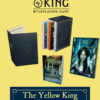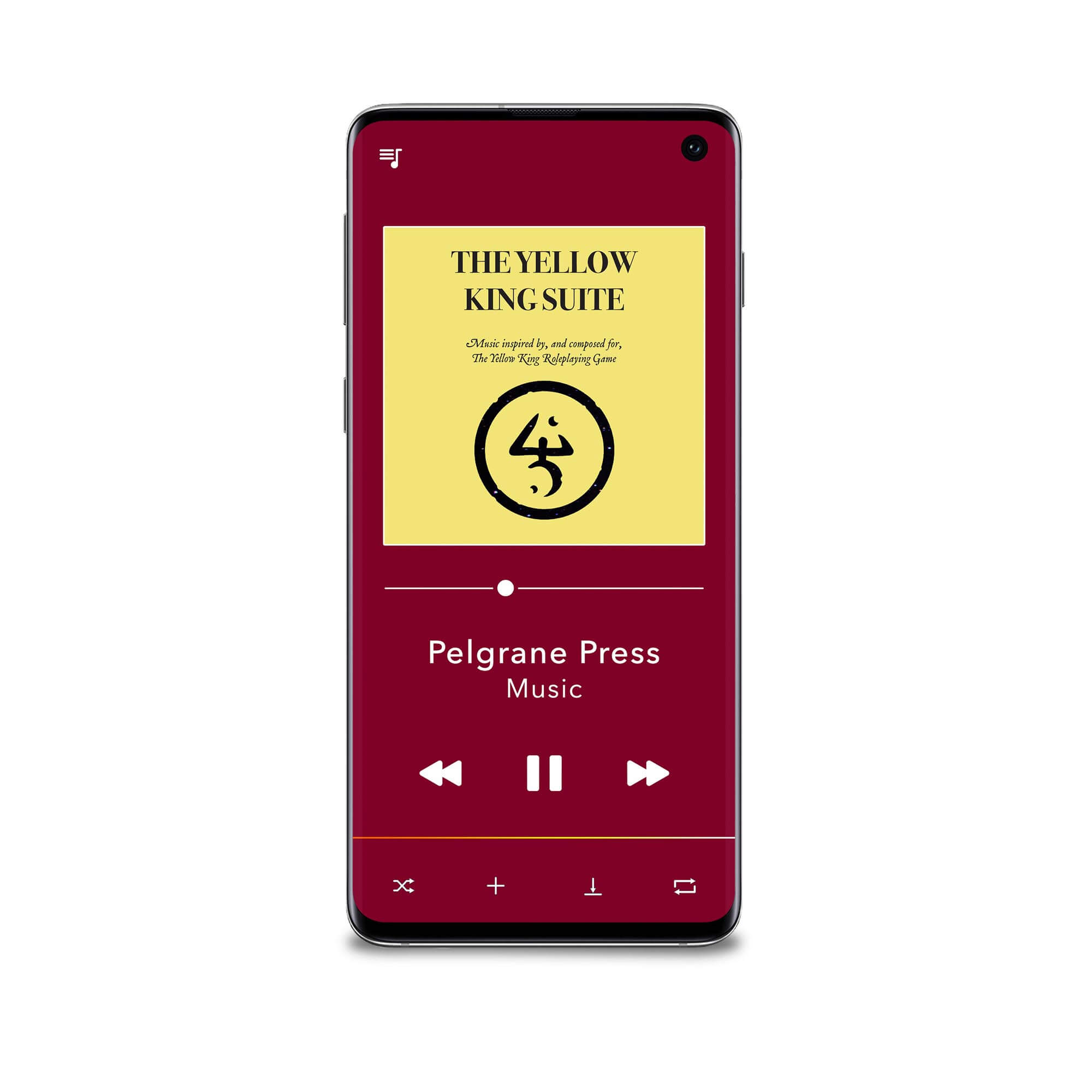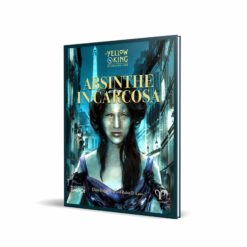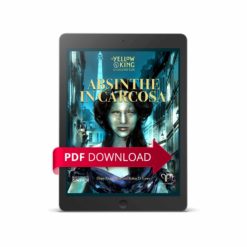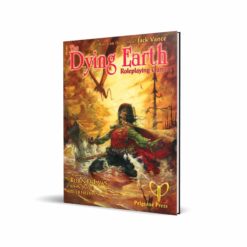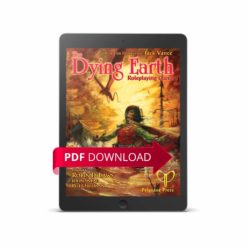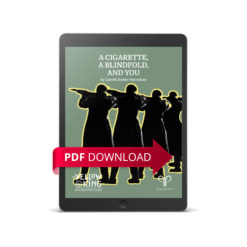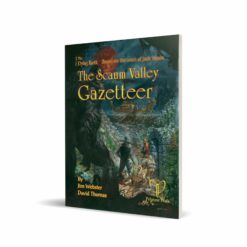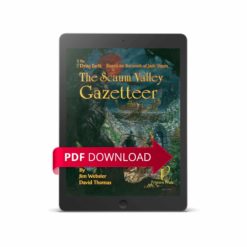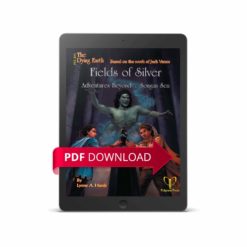£3.95
Cover Artists: Mirela Nita, Roxane Genot
The Yellow King RPG Suite
The Yellow King Suite covers 4 different settings. In addition it presents a theme for The Yellow King RPG and music for the doomed, lost city of Carcosa. This project needed to reflect the various settings while uniting them all as a cohesive suite. The settings required different instrumentation and arrangements however the influence of the Yellow King is evident in all of them.
The King in Yellow
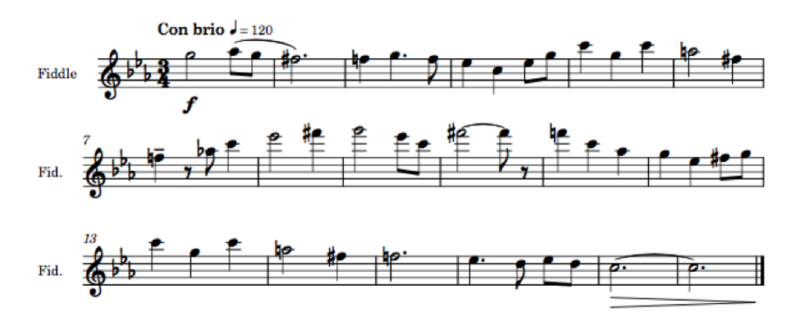
Inspired by the mysterious entity in tattered yellow robes, the haunting theme of the Yellow King waltzes through the chromatic chord changes of Cm D Fm Cm. The mysterious violin theme accompanied by harp and tuba evokes music of fairgrounds and travellers’ campsites. Eventually a full string section takes over as a clarinet plays counterpoint sounding almost like a carnival calliope. Finally a glockenspiel and boys’ choir fills out the arrangement with a mystic, spiritual aura. This music is reminiscent of the music of Danny Elfman but ultimately is influenced by the Romanza from Aram Khachaturian’s Masquerade. This chromatic twisting King in Yellow theme sets the tone of the whole suite. The melody is referenced throughout the suite, sometimes overtly, sometimes disguised and hidden. Occasionally only a few notes are quoted and often the melody is reharmonized.
The Belle Époque
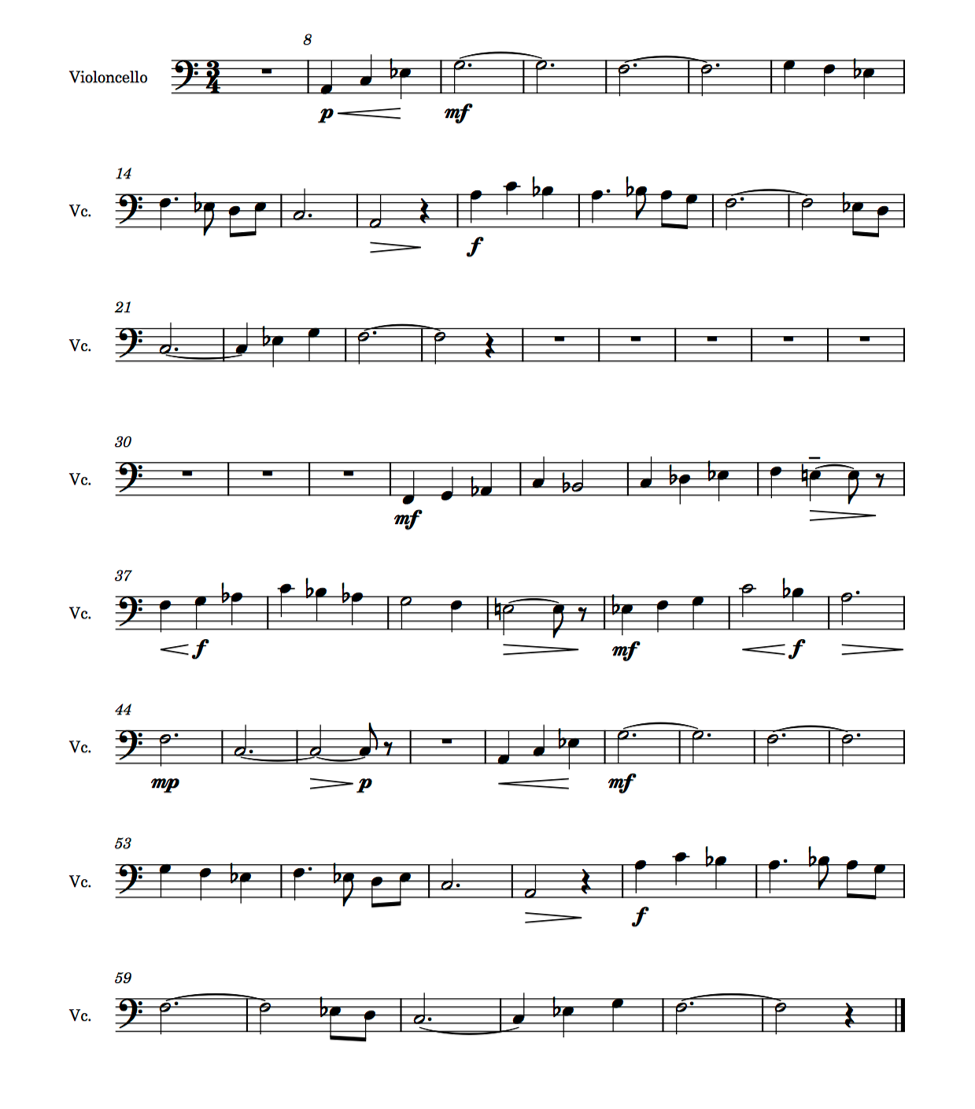
A gentle echoing piano ushers in lush ambiguous harmonies setting a tone of absinthe-soaked, dreamlike ennui. Solo cello gently drifts over the soft haze. Low register harp adds a rhythmic element as the intensity of the music increases. While the music does not directly quote the King in Yellow theme, the waltz rhythm and mercurial string passages definitely reference it. This piece was heavily influenced by the piano music of Erik Satie who was an influential Parisian composer during the Belle Époque.
The Wars
Unrepentantly martial, this music unites a constant snare rhythm with relentless strings, piccolo and brass. The great and terrible European conflict of 1947 brought to life within the orchestra. The King in Yellow theme enters in a somewhat declamatory form played by the brass and woodwind. The music loses momentum, falling into a murky brass harmony, then builds again as the rhythm restarts and the King in Yellow theme returns triumphantly in the upper register of the strings and woodwind accompanied by choir. Holst’s Planets was a strong influence on this piece. Obviously with the rhythmic elements of Mars but also Holst’s use of polychords.
The Aftermath
This piece takes on a somber hypnotic quality as the listener is lulled by the rhythmic notes of the harp. Harmonies in the strings and woodwind move entirely in parallel giving an unsettling quality typical of Impressionist music. Just as this mood takes hold, the King in Yellow theme returns in the strings and woodwind, spreading paranoia and fear. Years after the conflict described in The Wars, humanity tries to pick up the pieces to discover the monsters are still there. The music describes the isolation and haunted fears of the survivors. Bernard Herrmann’s music was a big influence on this piece, particularly his work in Vertigo.
This Is Normal Now
As we reach the modern day, the shadows of the past continue to influence the present. Evil and disturbing elements surround you but just out of sight. You have to convince yourself that this is normal now. Just ignore the encroaching terror and keep on dancing. The music is EDM with no acoustic instruments, just human whispers. Even within the dance, the influence of the Yellow King is not far away and again his theme can be heard through the music.
Carcosa
This final somewhat enigmatic piece is an attempt to capture the indefinable quality of the doomed city of Carcosa. Dramatic, emotional yet weary and fatalistic, the music moves through a series of moods depicting both the city and the play, The King in Yellow. Full symphonic strings take the spotlight here supported by occasional low brass. The entire piece trades through a rhapsodic series of musical moments where fragments of melodies spring to life and fade, slowly evolving into a new musical idea. The insidious melody of the King in Yellow grows out of this development, this time presented within a contrapuntal arrangement moving between the various string choirs.
from James
Writing this music has been a personal pleasure for me. I’ve always found The King in Yellow to be exceptionally evocative and it was a wonderful challenge to create the suite. I hope it brings unsettling pleasure to the listeners!
I would also like to stress that none of this would have happened without the amazing talents of two other people. Mirela Nita composed the wonderful music for both The Aftermath and This is Normal Now. She also played the violin part on my King in Yellow piece. Roxane Genot played the sublime cello part that breathes life into The Belle Époque. Thank you to both of you for the incredible inspiration you brought to this project!


